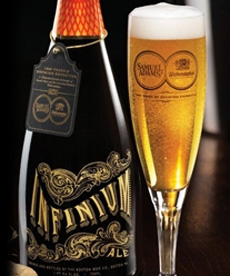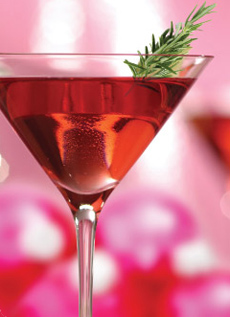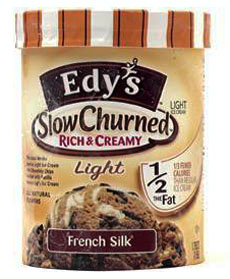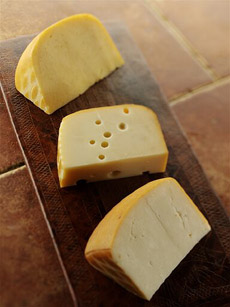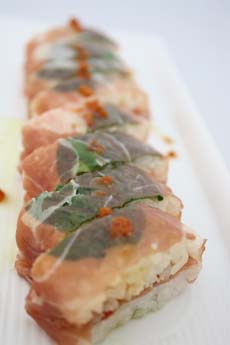
Beautiful and delicious Prosciutto Sushi.
Photo courtesy MaiCuisine.com. |
|
Fusion food refers to the combination of widely differing ethnic or regional ingredients or techniques: French-Thai fusion cuisine, for example. In sushi, there’s a lot of Japanese-American fusion.
The California Roll, for example, is not a traditional Japanese roll in the manner of tekka maki (tuna roll) and kappa maki (cucumber roll). There were no avocados in Japan.
California roll was invented in Los Angeles, land of the avocado, about 1973 by a sushi chef.
Similarly, cream cheese is not a Japanese ingredient. Philadelphia Roll, cream cheese and smoked salmon, was subsequently born in the U.S.A., along with Spider Roll and most of the fancy, multi-ingredient rolls on sushi menus (except for Futomaki, a Japanese tradition).
We’ve seen our fair share of Japanese-American fusion sushi (Boston Roll with Boston lettuce, Pumpkin Tempura Roll). Tuna tartare was created in Beverly Hills by Shigefumi Tachibe, a Japanese-born, French-trained chef, in 1984. Here’s the original recipe. The spicy roll group—spicy tuna, salmon, and others—followed. |
| Asparagus, spinach and other ingredients that originated in the Mediterranean basin are “fusion sushi.” Yet, while sushi chefs in competitions use fusion ingredients from reindeer tenderloin to mozzarella, we’ve never seen meat-based sushi or Italian fusion sushi in restaurants—until now.
This novel and delicious Prosciutto Sushi is an easy-to-make box sushi. The only “extra” you need is an inexpensive sushi press.
Prosciutto Sushi is a great pairing with white, red or sparkling wine. Get the recipe and serve up a storm.
See all the different types of sushi in our Sushi Glossary.
|
